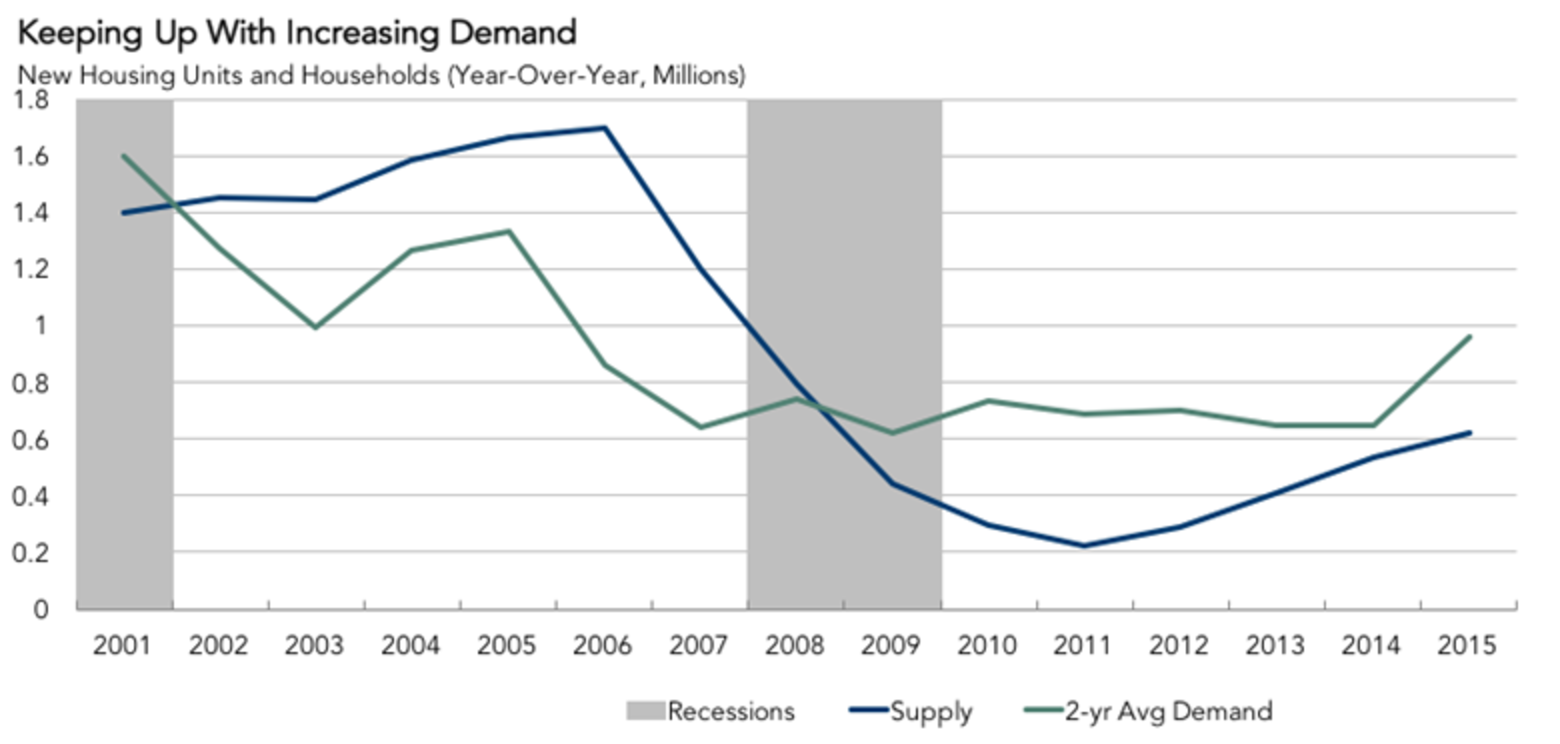The latest report from the U.S. Department of Housing and Urban Development and the U.S. Census Bureau showed housing starts sank to an eight-month low.
Now, economists are saying that drop could intensify in the months ahead as building permits also saw a drop in May.
“Housing shortages look to intensify and may well turn into a housing emergency if the discrepancy between housing demand and housing supply widens further,” said Lawrence Yun, National Association of Realtors chief economist. “The falling housing starts and housing permits in May are befuddling given the lack of homes for sale and the quick pace of selling a newly-constructed homes.”
“Meanwhile, job creations of a consistent 2 million a year will push up housing demand further,” Yun said. “One thing that’s moving up is the housing costs for consumers: higher home prices and higher rents.”
And NAR wasn’t the only one alarmed by the survey’s results – another expert explained the importance of watching the market to see if the decrease is a new trend.
“We will need to watch carefully if this is a one-time anomaly or a multi-month trend,” said Scott Volling, PwC U.S. Engineering and Construction advisory director. “The industry is already facing an inventory shortage, which is driving up prices, so these results indicate the demand-supply gap could get worse and further impact affordability for certain segments and markets.”
One economist, who served as chief economist at Fannie Mae for more than 20 years, said the drop was surprising, and that the industry expected a modest increase of about 1.2 million units.
“The decline in starts is all the more surprising given high levels of homebuilder confidence and increases in new home sales, although there was a sharp drop in April,” Nationwide Chief Economist David Berson said. “Additionally, mortgage rates remain very low and mortgage credit availability, while much tighter than in last decade’s housing boom, has eased considerably in recent years.”
However, the National Association of Home Builders insists this drop was not unexpected, and that it falls in line with the findings of the most recent NAHB/Wells Fargo Housing Market Index.
“Today’s housing starts numbers are consistent with the decline in the June NAHB/Wells Fargo Housing Market Index,” said Robert Dietz, NAHB senior vice president and chief economist. “Market data indicates that single-family construction had a strong start for the year, with recent weakness in May. On a year-to-date basis, single-family starts are 7.2% higher than this time in 2016.”
Another expert explained the reason for the lack of new housing supply – despite the rising demand for new homes.
“For much of this spring home-buying season, builders have struggled to keep up with the growing demand from buyers,” said Bill Banfield, Quicken Loans executive vice president of capital markets. “While overall confidence in the housing market and economy continues to strengthen, a shortage of skilled workers is starting to press on the industry.”
But the report did still have its positive side, as one expert pointed out. Housing completions were up.
“Even though housing starts fell in May, the good news for buyers is that the number of completed new homes is up,” realtor.com senior economist Joseph Kirchner said. “With completions up 5.6% from last month and 14.6% from a year ago, these new homes prevent the number of properties the market from falling too rapidly.”
The chart below from First American Financial Corp. shows that housing supply is struggling to keep up with the increase in housing demand.
Click to Enlarge
(Source: First America, HUD, Census Bureau)
“Since 2009, new housing supply has been falling short of new housing demand,” First American Chief Economist Mark Fleming said. “The shortfall was the largest in 2011, 465,000 housing units, and cumulatively through 2015 the total shortfall has been 2.2 million housing units.”
“Currently, I estimate that the amount of housing supply necessary to just keep pace with demand is probably around 1.5 million housing units a year,” Fleming said. “Housing completions at 1.1 million SAAR this month falls short of what is needed.”


